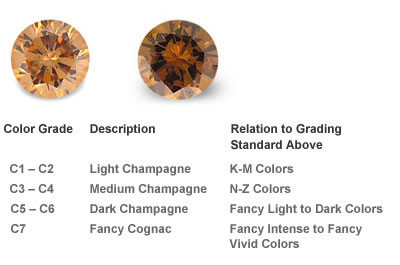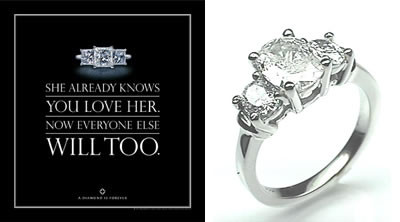DIAMOND SOURCE OF VIRGINIA NEWS: AUSTRALIAN DIAMOND
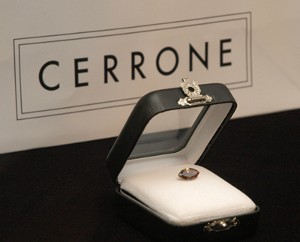 Anne and Denny attended a sparkling reception at the Australian Embassy in Washington July 19 to see the glittering 2.09-carat, cognac-colored diamond that was presented to Washington’s famous Smithsonian Museum by Janette Howard, wife of Australia’s prime minister John Howard, on behalf of Sydney jeweler Nicola Cerrone and Rio Tinto’s Argyle diamond mine in Western Australia.
Anne and Denny attended a sparkling reception at the Australian Embassy in Washington July 19 to see the glittering 2.09-carat, cognac-colored diamond that was presented to Washington’s famous Smithsonian Museum by Janette Howard, wife of Australia’s prime minister John Howard, on behalf of Sydney jeweler Nicola Cerrone and Rio Tinto’s Argyle diamond mine in Western Australia.
The museum has an extensive collection of the sparkling gemstones from around the world and the Argyle-Cerrone diamond will be its first one from Australia. Diamonds from the Argyle mine can be pink, cognac, champagne and colorless. The mine, commissioned in 1985, is the world’s largest supplier of diamonds, producing about 30 million carats annually.
Cerrone Jewelers also had a display of their beautiful jewelry at the reception and included their new line of diamond watches. Anne especially enjoyed this part of the reception because she was able to purchase one of the watches and wore it home.
Learn more about cognac and champagne colored diamonds in the article below in this newsletter.
WEBSITE HIGHLIGHTS: ARTIFICIAL DIAMONDS
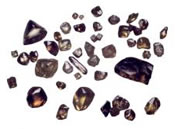 There continues to be a lot of publicity about man-made diamonds, synthetic diamonds, simulated diamonds, cubic zirconia and moissanite. Even though we do not sell these products, we have provided a source of information on these materials.
There continues to be a lot of publicity about man-made diamonds, synthetic diamonds, simulated diamonds, cubic zirconia and moissanite. Even though we do not sell these products, we have provided a source of information on these materials.
If you are shopping for a diamond or are just fascinated by the concept of a diamond grown in a laboratory, check out the various web pages discussing artificial diamonds.
Learn more about artificial diamonds…
DIAMOND SHOPPER MISTAKES: UNDERSTAND APPRAISED VALUE
What will this diamond appraise for? This is a common question asked by diamond shoppers but the real question should be “what is this diamond worth?” If you thought the appraised value was what a diamond was worth, then you are among the majority of shoppers confused about what appraised value really is.
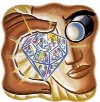 At many jewelry stores, diamond appraisals are used as marketing tools. Clerks point to the diamond’s appraised value as evidence that customers are getting a bargain. It is not uncommon for appraised values to be 25% to 100% more than the purchase price of the diamond but that does not mean the price is a great deal. It more likely means the appraised value is artificially too high.
At many jewelry stores, diamond appraisals are used as marketing tools. Clerks point to the diamond’s appraised value as evidence that customers are getting a bargain. It is not uncommon for appraised values to be 25% to 100% more than the purchase price of the diamond but that does not mean the price is a great deal. It more likely means the appraised value is artificially too high.
Beware of stores that use appraised value as a sales gimmick. And if they provide a “certification” that has an appraised value, run for the door. The true certification laboratories like the AGS, GIA and EGL do not have a dollar value on them. These labs provide grading reports that assess the characteristics of a diamond, not the value.
Using appraisals as marketing tools is shameful. Customers see the high appraised value and walk out of the store thinking they got a great deal. What they really got was an ear full of misinformation and a document with a grossly inflated value.
Appraisal values do have a purpose and that is to set the maximum that insurance companies are responsible for if you file an insurance claim. Keep in mind that I said the maximum. Most insurance companies have the fine print that says they are only responsible for the value they can replace the item for or the appraised value, which ever is less. Here is a common story we hear locally in Richmond so I would imagine it happens all over the country.
Customer of some jewelry stores pay $12,000 for what we sell for $6,000. They get an appraisal from the store for $15,000. They think they got a great bargain because they got their item for 20% less than its appraised value. They get the jewelry item insured and pay premiums based on the $15,000 value. A year or two later, the item was taken in a theft or loss and they file an insurance claim. The insurance company only gives them $7,000 because that is what they can replace it for now.
Because the replacement value of jewelry does appreciate with time, it is probably a good thing to have the appraised value be higher than the purchase price. The real problem in the example above was that the purchase price and the appraised value are way too high relative to what our price would have been.
So how can you be sure of a diamond’s worth? The best way is to compare the diamond you want with comparable diamonds from sources with low overhead and low prices. That is how we determine the best values for our clients every day. We find diamonds that meet our clients’ requirements and then seek the best value based on the price and quality. Putting some inflated appraised value on the item does not make the diamond worth more or a better bargain.
Discover more jeweler’s tricks and traps…
CHAMPAGNE COLORED DIAMONDS
The natural fancy colors are quite expensive in most colors, with the exception being the brown colors. These can range from fancy champagne down to an unattractive brownish color.
The lower quality brown diamonds are often used in cheaper promotional quality jewelry items, such as those sold by Wal-Mart, Sears and discount stores. These diamonds are very cheap and are why these stores can sell 1.00 ct diamond tennis bracelets for $299.00 or less. (To make these diamonds more appealing, a new term TLB, or Top Light Brown, is used). And while the browns can look beautiful in the fancy colors, most promotional quality jewelry uses off color browns which are much less attractive.
The champagne color diamond is the most common fancy color. It is actually a diamond that shows various intensities of brown. Since the GIA grading scale covers tints of yellow and not brown, a new system – the “C” scale – was developed to accommodate champagne. This was primarily due to the opening of Australia’s Argyle Diamond Mine that produces so many beautiful brown/champagne colored diamonds.
In spite of the significant marketing efforts of the Argyle Mines, demand for the brown diamonds is not great and they generally command relatively low prices.
DIAMONDS.BLOGS.COM
If you are looking for additional shopping advice for diamonds or the latest diamond industry news, check out Denny’s blog.
With numerous entries every day, you can see what is happening in the fascinating world of diamonds and jewelry.
Click here to visit www.diamonds.blogs.com
INCLUSIONS & BLEMISHES: SURFACE GRAIN LINES
These are lines that are caused by twinning or by large inclusions that are oriented differently from the main crystal. They stand out as visible lines at the surface.
The words “Surface grain lines are not shown” on AGS grading reports and “Surface graining is not shown” on GIA grading report are frequent comments. We get a lot of concerned questions because these terms are not mentioned in all discussions of inclusions and blemishes.
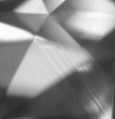 Grain lines are created by irregular crystallization that takes place when a diamond is formed. All diamonds have graining. A diamond that is graded Internally Flawless can have internal graining and as long as it’s transparent will not affect the clarity grade unless they are present in large masses. White or colored grain lines can lower a diamond’s clarity grade.
Grain lines are created by irregular crystallization that takes place when a diamond is formed. All diamonds have graining. A diamond that is graded Internally Flawless can have internal graining and as long as it’s transparent will not affect the clarity grade unless they are present in large masses. White or colored grain lines can lower a diamond’s clarity grade.
Internal graining can also be the cause for a diamond not getting the highest polish grade. Polishing against the grain can cause the diamond not to accept attempts for the highest possible polish. Anyone who has attempted to sand a piece of wood against the grain knows that it is very hard to get the surface smooth. The same is true for diamonds. When polishing each facet, even the most skilled cutter can encounter variations in hardness or grain, similar to working with wood. The result is very fine polishing lines running across a facet.
These grain lines are very common in pink and fancy colored diamonds, but are rarely visible to the naked eye. In colorless diamonds, these surface grain lines are seldom visible to the eye and typically very minor in importance even though mention of them in the comments section of certifications draws a lot of attention.
Learn more about Inclusions and Blemishes…
INCREASING DEMAND OF DIAMONDS
De Beers, the world’s biggest diamond company, said it will sell at least $6.4 billion of diamonds this year, a record, as appetite for the precious stones grows in markets from the US to China.
Diamond sales rose 8% to $3.2 billion in the first half, and will at least match that in the second six months of the year, Johannesburg-based De Beers said today. Anglo American Plc owns 45% of De Beers, which sells three-fifths of the world’s rough diamonds.
Prices in the $8.2 billion annual market for uncut, unpolished diamonds have jumped by more than a third since 2003 as discoveries have failed to keep pace with demand, according to Rapaport Research, a U.S. consulting company. De Beers has raised prices twice this year.
In Japan, the DTC has had great success with its Trilogy campaign — the three-stone diamond jewelry segment has tripled. Japan equaled US retail spending on diamond jewelry in 1993-94 and has slipped back to become the world’s second-largest market, with a 15 percent share against the US’ 50 percent. De Beers Managing Director Gary Ralfe said the country has a high savings rate and the Japanese are willing to spend on diamonds.
In India, the retail market for diamond jewelry grew 24 percent in 2003 and 21 percent last year. De Beers is actively promoting products specifically designed to appeal to the Indian consumer.
China is a critical market and already eight out of 10 brides in Shanghai, which influences trends elsewhere in China, are receiving diamond wedding rings. China’s retail market is worth 1.4 billion dollars and grew 11 percent last year.
GEMSTONES: SPINEL
Pure spinel is white, but impurities give it a wide range of colors. Almost all colors are used in jewelry, but the most valuable and popular color is the deep red. These red gems closely resemble rubies, and the two may be difficult to distinguish. In fact, until the late 19th century, there was no distinction between ruby and red spinel, as they look identical and are found in the same localities. Nowadays, distinctions can be made through hardness and x-ray tests. Many famous old “rubies” were found to be Spinel. The enormous “ruby” that forms the centerpiece of the royal crown of England (the Black Prince’s Ruby) was determined to be spinel.
In Burma (Myanmar), where some of the most beautiful colors are mined, spinel was recognized as a separate gem species as early as 1587. In other countries the masquerade lasted for hundreds of years after that. Spinels were most often referred to as “balas rubies” which may have referred to color or to country of origin. In addition to Burma, now known as Myanmar, spinel is mined in Sri Lanka, Tanzania, and Tadjikstan, part of the former Soviet Union.
 Now treasured for its own sake, spinel is a favorite of gem dealers and gem collectors due to its brilliance, hardness and wide range of spectacular colors. In addition to beautiful rich reds, spinel can be found in a range of beautiful pastel shades of pink and purple. Of particular interest is a vivid hot pink with a tinge of orange that is mined in Burma that is one of the most spectacular gemstone colors in any gem species. Spinel also comes in beautiful blues which are sometimes called cobalt spinel, but these are very very rare.
Now treasured for its own sake, spinel is a favorite of gem dealers and gem collectors due to its brilliance, hardness and wide range of spectacular colors. In addition to beautiful rich reds, spinel can be found in a range of beautiful pastel shades of pink and purple. Of particular interest is a vivid hot pink with a tinge of orange that is mined in Burma that is one of the most spectacular gemstone colors in any gem species. Spinel also comes in beautiful blues which are sometimes called cobalt spinel, but these are very very rare.
Here are some of the names for the various colors of spinel:
- Ruby Spinel – ruby-red variety of Spinel
- Rubicelle – yellow to orange variety of Spinel
- Balas Ruby – pink to pale red variety of Spinel
- Almandine Spinel – violet variety of Spinel
- Blue Spinel – light to dark blue variety of Spinel
- Pleonast – black variety of Spinel
- Picotite – brown variety of Spinel
- Gahnite or Gahnospinel – greenish or bluish, zinc-rich variety of Spinel
- Sapphire Spinel – false name describing blue spinel
Spinel and ruby are chemically similar. Spinel is magnesium aluminum oxide and ruby is aluminum oxide. This is probably why the two are similar in a few properties. Not surprisingly, the red coloring agent in both gems is the same element, chromium. Spinel and Ruby also have similar luster (refractive index), density and hardness. Although ruby is considerably harder (9) than spinel, spinel’s hardness (7.5 – 8) still makes it one of the hardest minerals in nature.
Spinel is a durable gemstone that is perfect for all jewelry uses. It is most often faceted in oval, round, or cushion shapes and is not currently found in calibrated sizes due to its rarity.

